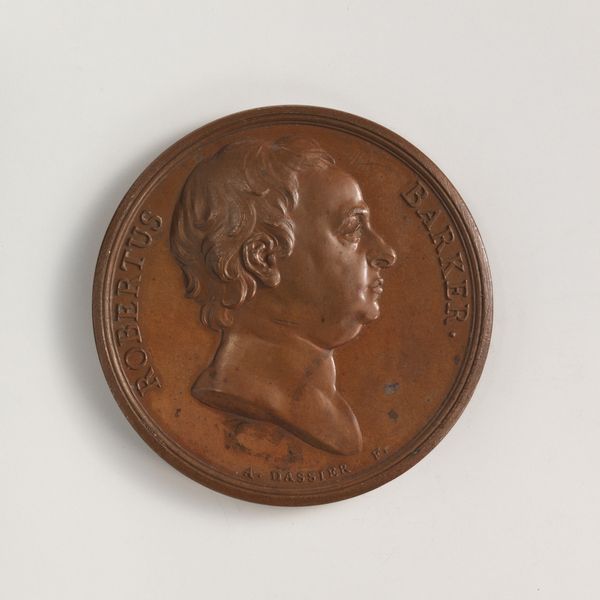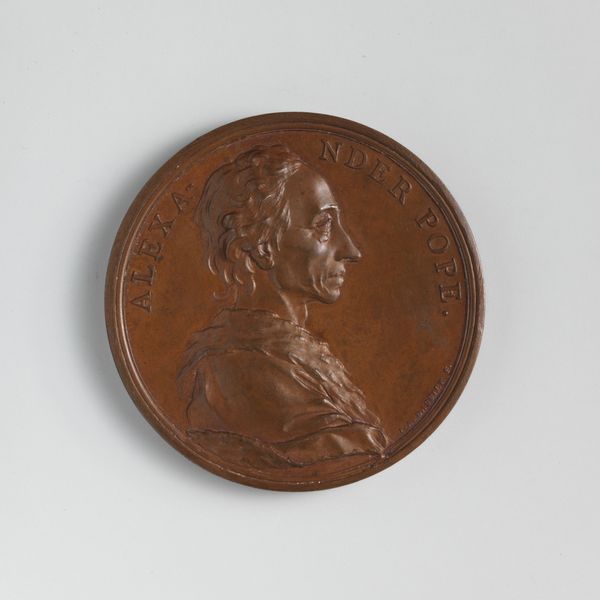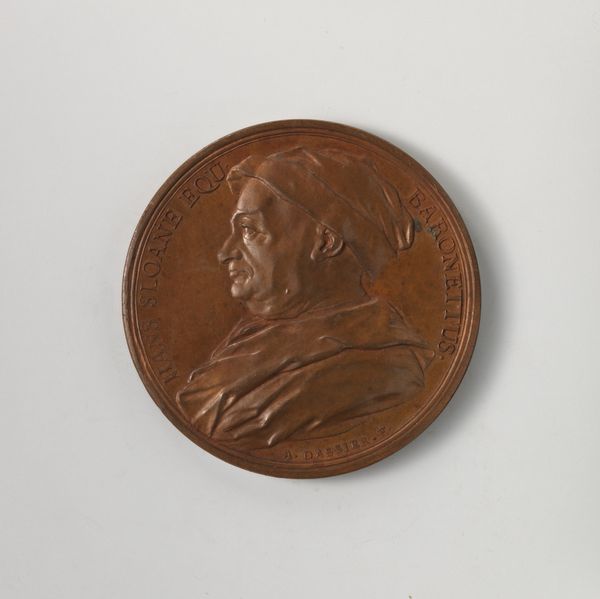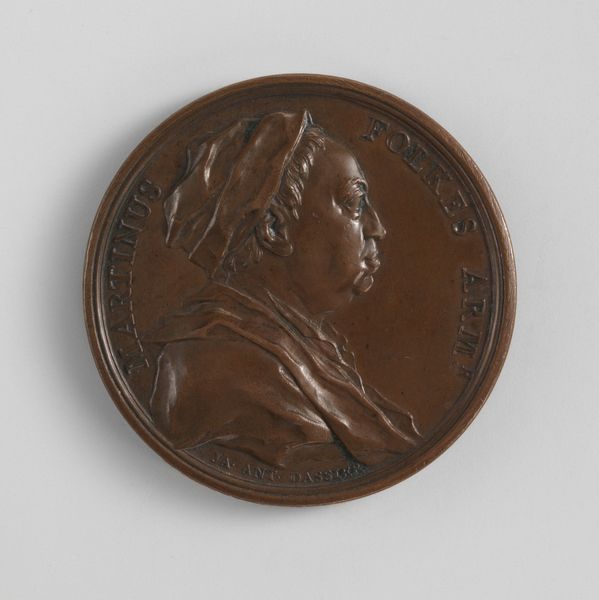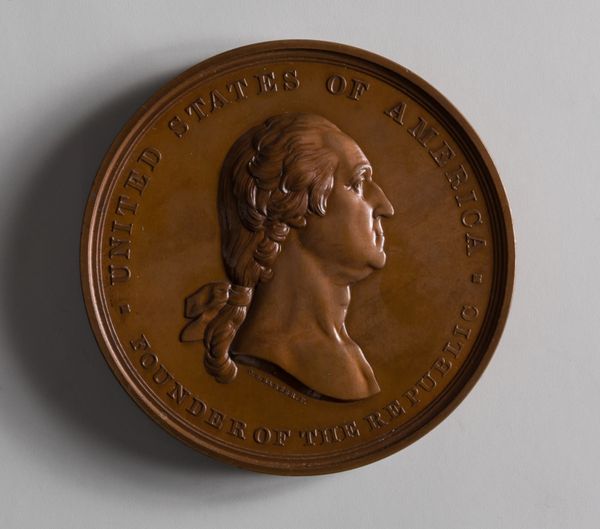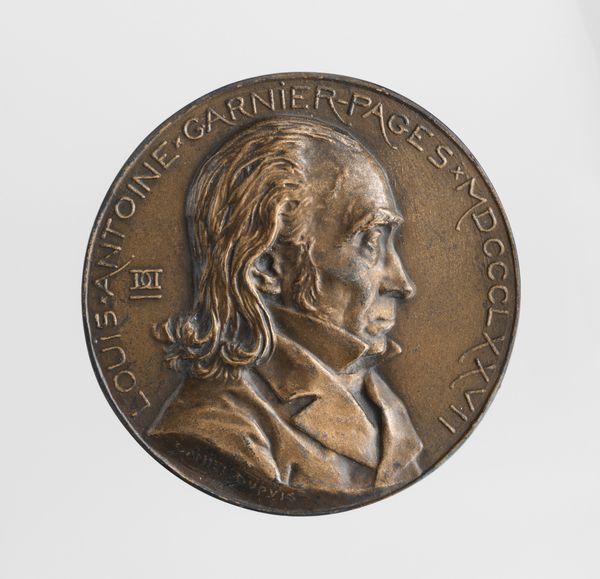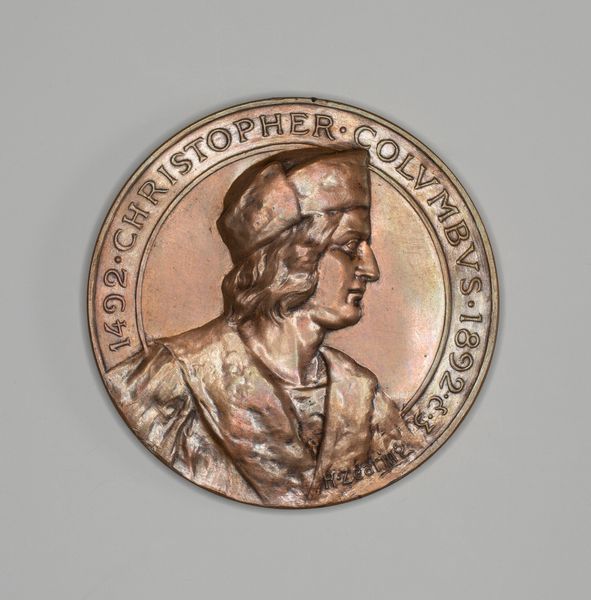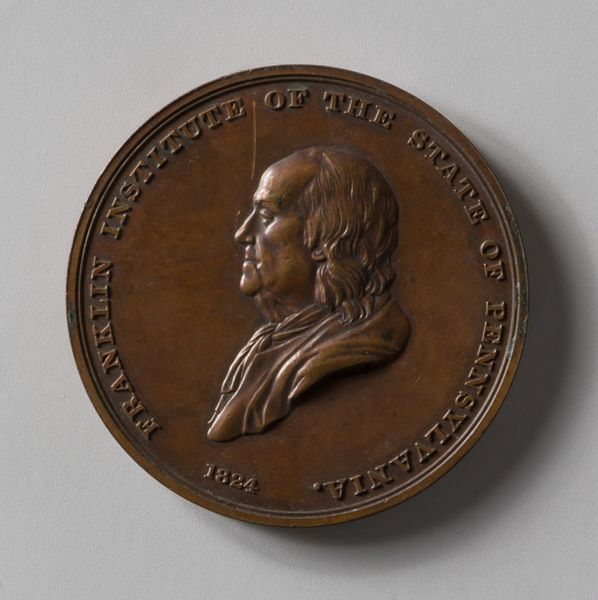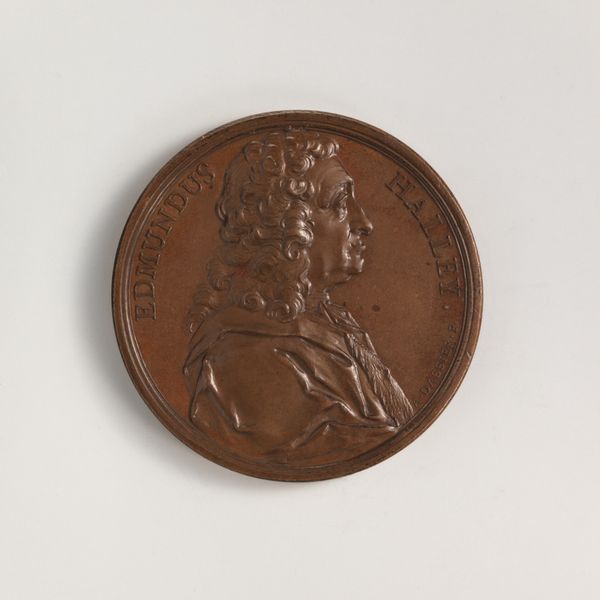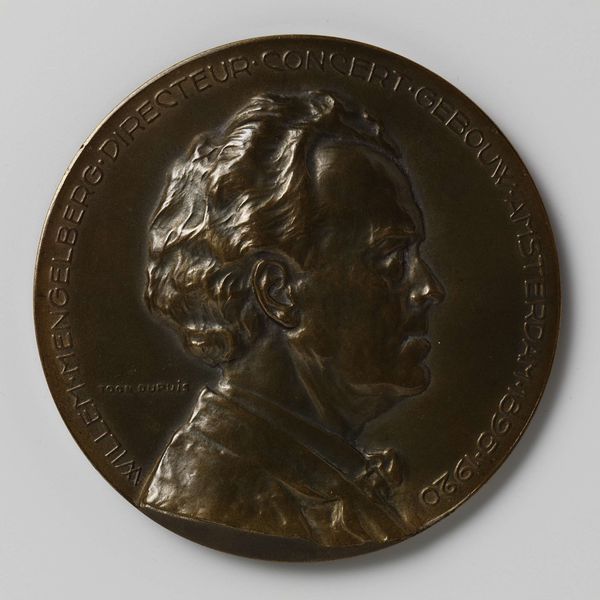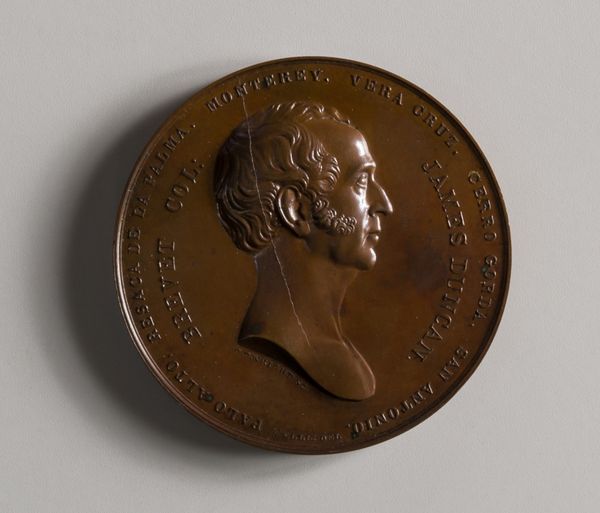
Treaty of Campo Formio, 1797 18th century
0:00
0:00
Dimensions: Diameter: 57 mm
Copyright: Public Domain
Curator: Here we have an 18th-century bronze medal, "Treaty of Campo Formio, 1797," crafted by Pierre-Simon-Benjamin Duvivier. It's currently held in the collection of the Metropolitan Museum of Art. Editor: Oh, that bronze has this warm, inviting glow. It looks…authoritative, somehow, despite its relatively small size. Gives a feeling of historical weight, like I’m holding a tiny, burnished moment in time. Curator: Exactly! The medal acts as a propagandistic tool, solidifying Napoleon Bonaparte’s image as a powerful leader after the Treaty of Campo Formio. Duvivier was a renowned medalist, and this piece is representative of the Neoclassical style popular then. Think of it in relation to contemporary discussions around power, representation, and how leaders cultivate their image. Editor: It is definitely cultivating! Look at that sharply defined profile, almost godlike in its remove. It's interesting, because it is like this frozen profile has to carry the full weight of an event—a whole treaty, a whole historical shift! It reminds me how images can be distilled down, packaged up, and handed out as unquestionable truths. What’s remarkable about a tiny medal is how much significance, gravity, it had—and, in a way, still has. Curator: Absolutely. Consider also who the audience was for this medal. These objects weren’t intended for mass consumption, but to solidify a leader's power among the political elite. So how do the artistic choices, such as the style, and material contribute to that goal? Editor: That’s really key, isn’t it? Bronze. This solid thing intended for solidity! To literally embody and *broadcast* an achievement. Makes you wonder about all the stories it could tell just through the wear and tear it might have faced traveling between hands and pockets. Curator: Indeed. This object reflects not just artistic trends but how leaders have manipulated image for centuries. It’s a starting point for thinking critically about historical and present narratives about identity, race, class and power. Editor: Seeing something like this pulls me in; this reminder of history literally shining there, urging conversations about the bigger narratives—who was in power, who got left out, and what all those echoes still mean now. Thanks for that context, really brings this moment to life.
Comments
No comments
Be the first to comment and join the conversation on the ultimate creative platform.
